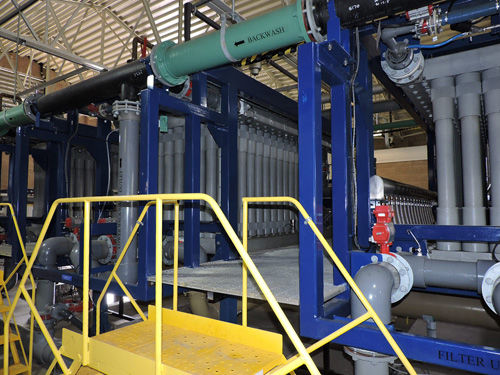Annual water quality report released
The city of Healdsburg has released its annual “Water Quality Report” based on sampling conducted throughout 2015. “The overall intent is to get some understanding that there are a lot of tests and a lot of safety procedures that go into providing water in Healdsburg, and that the tests show that the city is compliant with the EPA (Environmental Protection Agency) standards for safe drinking water; and that the city is consistently compliant with the standards for safe drinking water,” said Healdsburg Utilities Director Terry Crowley.
While concerned about the lead levels detected at a local school last year, Russian Riverkeeper Policy and Outreach Coordinator Bob Legge said, “I’d say Healdsburg is really looking pretty good.”
Legge toured the Healdsburg wells while working with the state at the regional water board in about 2010. The tour was part of an environmental studies class taught at Sonoma State University. “I’m pretty confident with the way those guys run their wells,” said Legge. “I think they’re on top of it and they’re not going to (withhold information from the) public if something happened.”
Copper, lead, residual chlorine, phosphates and fluoride levels are amongst what Crowley described as “key things” for which water is tested. He said that many other things are also tested for, such as dissolved solids from runoff like chloride and sulfates; as well as naturally occurring things like sodium and aluminum, which occur in natural deposits according to the report. Lead is tested every three years.
“We’re well below the EPA’s level for lead,” said Crowley. The report shows that with one exception, the testing for lead showed less than five parts per billion (PPB) in Healdsburg’s drinking water. However, drinking fountains at Healdsburg Elementary School’s main building were discovered to have unusually high levels of lead over Thanksgiving break last year. The highest level allowed by state regulations is 15 PPB.
Legge said that the levels detected at the school should prompt more frequent testing to discover if the lead levels return, or are present elsewhere. He said that older plumbing in buildings might be the concern, and not the fault of the water utility. “That’s a pretty common thing because they used to use lead in the solder,” said Legge about outdated construction.
Typically, lead testing is conducted in homes around town on a volunteer basis, said Crowley. Weekly testing for all other dissolved solids and chemicals is done at the various well sites around town.
Legge noted that although there were no violations by the water utility in 2015, “That was because they can average it all out. If you get a hit of arsenic, it could be detrimental.”
Crowley said that the report is regulated in how it is presented, “It does read like a chemistry lab,” he said.
Don McEnhill, the executive director of Riverkeeper, said in an email: “The levels of most contaminants are very low, to good, as with alpha emitters (a way of measuring radioactive emissions from unstable atoms) which is 66 times below the safe limit. Our region does have very hard high mineral and metal content due to all the geologic weathering and fact that much of our water runs through our gravel which has a lot of mineral rich rocks that are leached.”
According to the report, orthophosphates have been added to the water supply since 1992 to help prevent lead and copper pipes found in homes from dissolving into the water. “(The report) looks at certain levels of orthophosphate that tends to bind metals so that they don’t dissolve and end up in the drinking water; so you don’t have high iron or lead content in the water,” said Crowley.
Healdsburg has, since 1952, fluoridated its drinking water. “We look at that to make sure that we’re not over inducing that chemical or under inducing that; making sure that we hit the state’s requirement for fluoridation,” Crowley said. The report shows that the average levels found for fluoride were 0.77 parts per million (PPM), with a maximum level detected at 0.94 PPM.
The highest level allowed by state requirements is 2.0 PPM. The report states that: “Our water system treats your water by adding fluoride in order to help prevent dental caries. The fluoride levels in the treated water are maintained within a range of 0.60 to 1.20 PPM as required by Department regulations.”
McEnhill said he filters his water at home to remove fluoride and chlorine. “I’m very comfortable with the safety of our water supply and only worry about chlorine; they use as disinfectant and (I) filter that out of all our water at our house which is served by city water,” said McEnhill. “It also removes fluoride, which helps ensure my kids won’t have too high a metal body burden as they grow up like I do having grown up on fluoridated water. We believe in fluoride in toothpaste and dental rinses but not in the water I give my kids – our bodies are big filters.”
Healdsburg’s water supply primarily comes from the Russian River, which also gets water from Lake Mendocino. Some of the supply comes from Dry Creek, which is fed by Lake Sonoma.
The report was mailed to utility customers last month and is available online at www.ci.healdsburg.ca.us/DocumentCenter/View/6435. “The city of Healdsburg’s water is consistently, and can remain consistently, safe to drink,” said Crowley.








